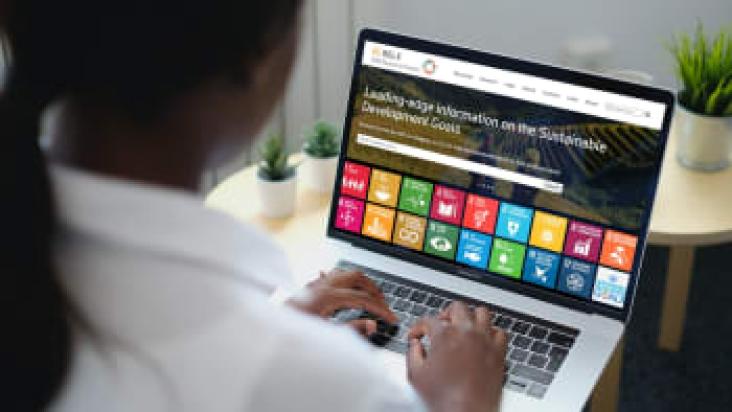This study investigates variations in the ice-flow speed of the Shirase Glacier ice tongue in East Antarctica from July 2018 to December 2021 using Sentinel-1 radar imagery. It identifies significant slowdown events linked to icebergs grounding on the seafloor, revealing that the ice tongue provides limited support to the grounding line, which has broader implications for understanding glacier dynamics and the potential consequences of ice loss in the context of climate change.
This research article presents a comprehensive review of the snow cover area, mass balance, glacial area loss, surface velocities, and the application of snowmelt runoff models in the Kashmir Himalayas and Upper Indus Basin. It finds that glaciers in these regions are experiencing significant ice loss and negative mass balance, with broader implications for water resources and ecosystems as climate change accelerates.

In this round up of 2024, we share the Special Collections published on the SDG Resource Centre throughout the year, featuring more than 800 research articles and book chapters made freely available to advance knowledge and accelerate the achievement of the United Nations Sustainable Development Goals by 2030.
The article concludes that the Mediterranean diet (MD) stands out as a model for sustainable and healthy eating, offering significant benefits for both human and planetary health. While it does not outperform vegetarian or vegan diets in terms of environmental impact, its nutritional quality, cultural acceptance, and moderate environmental footprint make it a practical and valuable dietary pattern. To maximize its benefits, policy and educational efforts should promote MD adherence and integrate sustainability considerations into dietary recommendations, addressing the challenges posed by globalization and shifting food preferences. Standardizing environmental impact measurements and considering broader sustainability indicators remain important areas for future research.
This study shows that climate change is likely to increase the frequency and severity of urban flooding, with higher greenhouse gas emissions leading to more intense rainfall and floods, highlighting the need for better planning and adaptation strategies to protect cities.

In this episode of the "World We Want" podcast, Márcia Balisciano interviews three global experts, Ronald DiPippo, Andrew Chiasson, and Luis Carlos Gutiérrez-Negrín. Their book, the 2nd edition of Geothermal Power Generation, was recently published by Elsevier. They discuss the development and potential of geothermal energy as a reliable and sustainable energy source, and how their work aligns with the UN sustainable development goals.
This text ties into SDG 13 (Climate Action) by focusing on innovative methods for CO2 capture using ionic liquids, which can help mitigate greenhouse gas emissions. It also relates to SDG 9 (Industry, Innovation, and Infrastructure) through the use of advanced computational approaches and generative models to accelerate the discovery and optimization of new materials.
This article provides a valuable tool for developing hypoxia scenarios, aiding in identifying restoration hotspots for climate-threatened lagoons.
This paper presents a novel multi-hazard risk assessment methodology for European coastal cities, which integrates indicators of hazard, exposure, sensitivity, and adaptive capacity.
This chapter supports SDG 7 (Affordable and Clean Energy) by exploring innovative approaches to enhance solar energy harvesting using plasmonic nanoparticles, thereby improving the efficiency and cost-effectiveness of solar energy systems. It also contributes to SDG 13 (Climate Action) by promoting sustainable energy technologies that help reduce reliance on fossil fuels and mitigate climate change.
